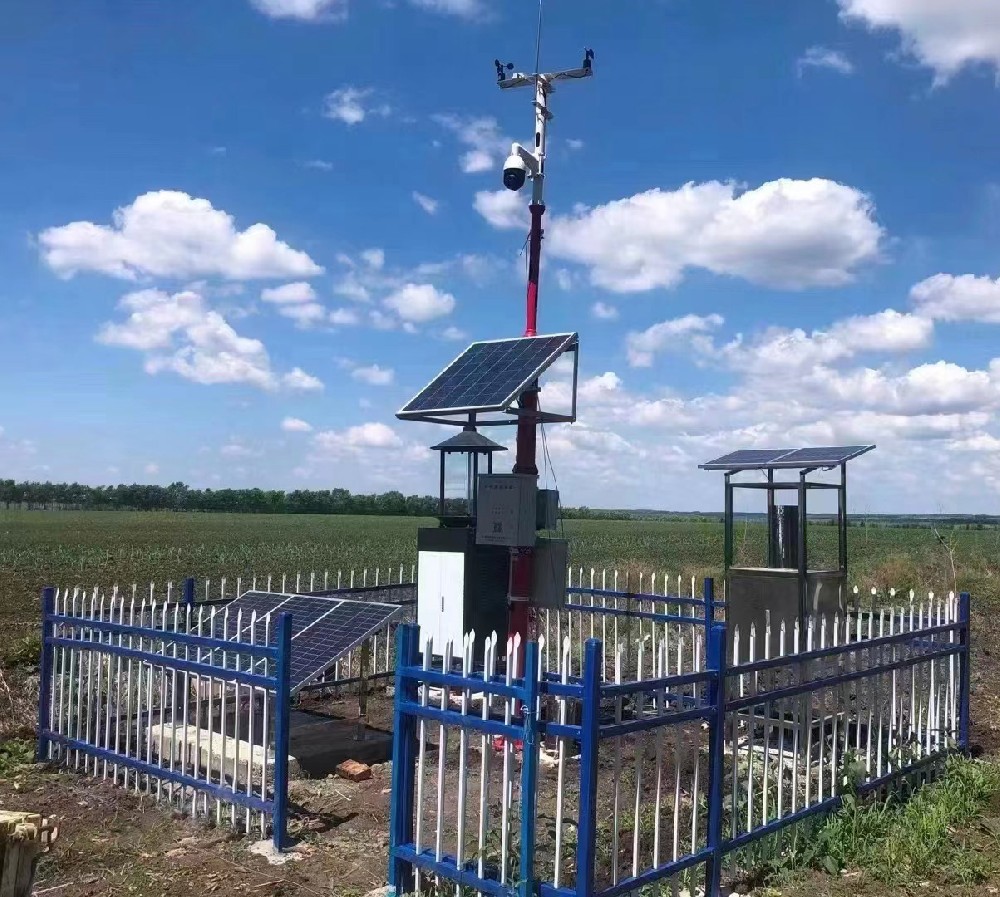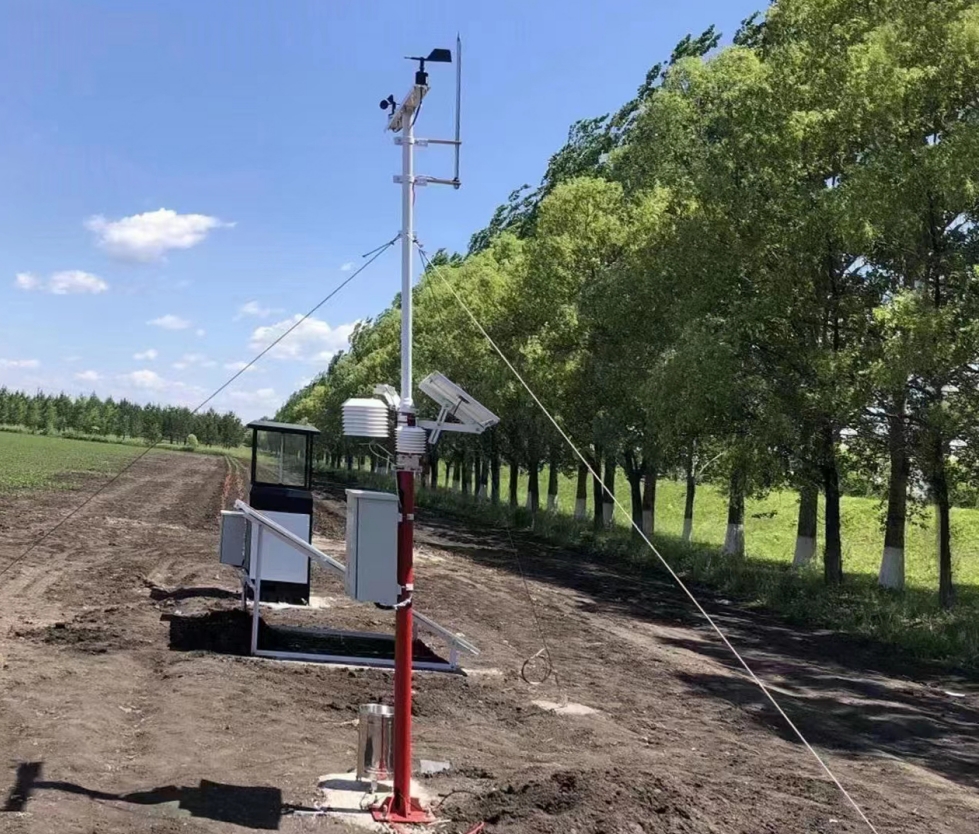

— Blogs —
—Products—
 Consumer hotline +8618073152920
Consumer hotline +8618073152920 WhatsApp:+8615367865107
Address:Room 102, District D, Houhu Industrial Park, Yuelu District, Changsha City, Hunan Province, China
Product knowledge
Time:2025-10-21 16:22:40 Popularity:426
—A Comprehensive Analysis of the Value and Selection Guide for Agricultural Weather Stations
A weather station (Weather Station) is a comprehensive monitoring device used to measure and record meteorological parameters.
It typically consists of multiple sensors, a data collector, and communication modules to monitor environmental factors such as air temperature, humidity, wind speed, wind direction, rainfall, atmospheric pressure, and solar radiation in real time.
In the past, weather stations were mainly used by meteorological bureaus or research institutions; however, with the development of Internet of Things (IoT) technology, more and more farm owners, cooperatives, and agricultural enterprises are deploying miniaturized, intelligent automatic weather stations. These systems allow real-time data viewing via cloud platforms or mobile apps, helping farmers make scientific decisions based on data.

An agricultural weather station is a weather monitoring system specifically designed for farmland, orchards, greenhouses, pastures, and other agricultural environments.
Unlike ordinary consumer-grade weather stations, agricultural weather stations offer higher accuracy, weather resistance, and data analysis capabilities, providing meteorological data that is more instructive for crop growth.
Real-time collection of key parameters such as air temperature and humidity, wind speed and direction, rainfall, solar radiation, and atmospheric pressure.
Expandable to include soil temperature, humidity, electrical conductivity, pH, and other sensors for precise monitoring of the crop root zone environment.
Supports communication methods like LoRa, 4G, and Wi-Fi for stable long-distance transmission, suitable for remote rural areas.
Equipped with solar panels and batteries to ensure year-round, all-weather operation.
Automatically uploads data to the cloud, where users can view trend curves and historical data via web or app, and receive threshold-based alarms.
Farmers need not complex scientific equipment, but a reliable, practical agricultural weather station that can guide production decisions.
Agricultural field environments are complex and variable, with high dust, humidity, and temperature fluctuations.
A qualified weather station should feature industrial-grade waterproof and dustproof construction (IP65 or higher), corrosion-resistant sensors, and maintain measurement accuracy over the long term.
Farmers don't need abstract meteorological data, but indicators that directly guide operations:
For example, "When to irrigate," "Frost risk assessment," or "Suitability for spraying."
High-end agricultural weather stations can automatically generate irrigation recommendations, pest and disease alerts, and evapotranspiration calculations based on monitoring data.
Installation should be "plug-and-play," with data viewable via cloud or mobile without needing professional maintenance personnel.
Modern farms often include automated irrigation systems, greenhouse controllers, and fertilization systems.
Excellent weather stations should support communication protocols like Modbus, API, and MQTT for easy integration with other IoT systems.
For small and medium-sized farms, cost-effectiveness is crucial. An ideal weather station should pay for itself within 1–2 growing seasons through water savings, reduced fertilizer use, and increased yields.
Case One: Apple Orchard Project in Gansu, China
A certain apple planting base in Gansu deployed NiuBoL's smart agricultural weather station, equipped with:
- Wind speed and direction sensor
- Air temperature and humidity sensor
- Soil temperature and humidity sensor
Through real-time monitoring and data analysis, the orchard achieved precision irrigation, with a water savings rate of 27%;
During spring frost periods, the weather station issued timely alerts, activating the frost prevention irrigation system and avoiding approximately 15% yield losses.
- Guide irrigation and fertilization decisions to reduce waste
- Mitigate natural disasters and climate risks
- Achieve crop yield increases and quality improvements
- Align with smart agriculture and sustainable development trends
- Support precision agriculture digital transformation
Through dual monitoring of the environment and soil, farmers can more scientifically grasp crop growth rhythms, transitioning from "experience-based agriculture" to "data-driven agriculture."

| Key Parameters | Wind Speed and Direction Sensor, Rainfall Sensor, Air Temperature and Humidity Sensor, Solar Radiation Sensor, Soil Temperature and Humidity Sensor, Soil pH Sensor |
| Monitoring Scope | Covers meteorological + soil elements |
| Measurement Accuracy | Temperature ±0.2°C, Humidity ±2%, Rainfall ±0.2mm |
| Power Supply | Solar + Battery |
| Communication Method | LoRa / 4G / Wi-Fi |
| Data Platform | Cloud platform + App dual access |
| Integration Interfaces | Modbus / API / MQTT |
| Warranty and Service | One-year warranty, fast technical support response |
Typically, one weather station can cover about 5~10 hectares. If terrain or crop variations are significant, multiple stations are recommended.
Home weather stations are geared toward entertainment or basic monitoring, with insufficient accuracy and durability;
Farm weather stations are industrial-grade equipment that provides reliable data for agricultural management.
Through the NiuBoL cloud platform or app, users can view real-time data trends, export reports, and set alerts.
Recommended annually. Rainfall and solar radiation sensors can be checked seasonally as needed.
Yes. NiuBoL equipment supports Modbus and API protocols for linkage control with automated irrigation controllers.
NiuBoL specializes in smart agriculture and environmental monitoring IoT solutions, with products covering weather monitoring stations, soil sensors, smart irrigation systems, and more.
NiuBoL agricultural weather stations have been successfully applied in over 60 countries and regions in Asia, Africa, South America, and beyond.
- Modular sensor combinations for flexible customization
- Multi-language cloud platform with global technical support
- Industrial-grade design adapting to various climate environments
- Powerful data analysis and system integration capabilities
Making agriculture smarter and yields more controllable.
The competition in modern agriculture has shifted from "who plants more" to "who understands data better."
A high-quality agricultural weather station is not just a weather-measuring tool—it's a farmer's "data advisor."
- Predict risks and reduce losses;
- Achieve precise irrigation and resource savings;
- Increase yields and improve quality.
Choosing a NiuBoL agricultural weather station equips your farm with a "smart brain." Smart agriculture starts with precise sensing.
Contact us: sales@niubol.com
Visit our website: www.niubol.com
Prev:Anemometer Online vs. Local Purchase: Which Is Better?
Next:Top Universities Using IoT Sensors in Agricultural Research
Related recommendations
Sensors & Weather Stations Catalog
Agriculture Sensors and Weather Stations Catalog-NiuBoL.pdf
Weather Stations Catalog-NiuBoL.pdf
Related products
 Combined air temperature and relative humidity sensor
Combined air temperature and relative humidity sensor Soil Moisture Temperature sensor for irrigation
Soil Moisture Temperature sensor for irrigation Soil pH sensor RS485 soil Testing instrument soil ph meter for agriculture
Soil pH sensor RS485 soil Testing instrument soil ph meter for agriculture Wind Speed sensor Output Modbus/RS485/Analog/0-5V/4-20mA
Wind Speed sensor Output Modbus/RS485/Analog/0-5V/4-20mA Tipping bucket rain gauge for weather monitoring auto rainfall sensor RS485/Outdoor/stainless steel
Tipping bucket rain gauge for weather monitoring auto rainfall sensor RS485/Outdoor/stainless steel Pyranometer Solar Radiation Sensor 4-20mA/RS485
Pyranometer Solar Radiation Sensor 4-20mA/RS485
Screenshot, WhatsApp to identify the QR code
WhatsApp number:+8615367865107
(Click on WhatsApp to copy and add friends)
